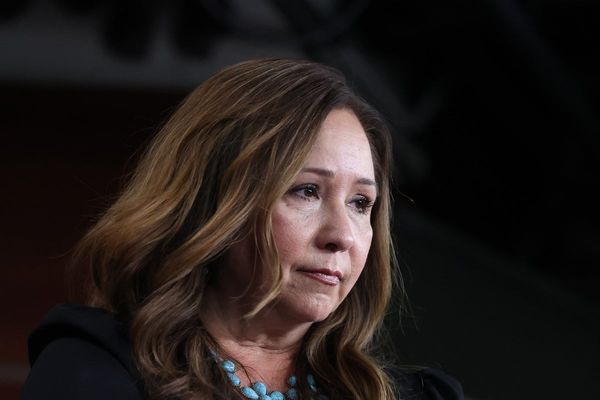
For decades, the rightwing gadfly Ed Blum, his group Students for Fair Admissions, and his shadowy rightwing funders have been trying to end affirmative action. They have finally secured an opportunity with the Trump-stacked supreme court to accomplish their mission with a decision expected in June.
In the cases before the court on Harvard’s admissions, Asian Americans have been presented as victims of affirmative action and unfair admissions processes. But Asian Americans spent decades fighting for both fair admissions and affirmative action. If that appears to be a contradiction, it’s only because the history of this struggle has largely been erased. The true story of Asian Americans in higher education complicates both Blum’s and Harvard’s claims, and should lead us toward rethinking the stakes of this debate.
As early as the 1950s, after the mass incarceration of Japanese Americans, Asian Americans called for affirmative action programs for racially excluded minorities. From the 1960s through the 1980s, Asian Americans helped force higher education open for excluded communities of color and benefited from affirmative action programs.
A crucial turning point came in 1995, when the University of California’s board of regents made the calamitous decision to eliminate affirmative action for its then nine universities, one of the biggest public university systems in America. California’s electorate voted to end all affirmative action programs a year later.
Since then, Asian American efforts for equity have been deleted from the record, replaced by a narrow narrative of victimhood. This shift is part of a larger trend: American higher education has swung away from belief in educational access for all into a toxic obsession with meritocracy, culminating in the annual Squid Game frenzy that exploits middle-class fears of being left behind. Every fall during college application season, many Asian American students confront a seemingly unresolvable question with vast national implications: how to square well-founded fears of discrimination with an abiding desire for racial equity.

Higher education has never been a colorblind meritocracy. Until the implementation of equal opportunity and affirmative action programs in the 1960s, most colleges and universities were historically white institutions. Schools like Harvard have always seen their role as producing – and reproducing – the nation’s elite. In the early 20th century, that meant preserving white Protestant wealth and privilege by excluding white Catholics and Jewish Americans. Admissions policies were devised to guarantee seats at these schools to what are now referred to as ALDC admits (athletes, legacy admits, dean’s preferred list, children of faculty and staff). Even now, 43% of Harvard’s white student population are non-competitive ALDC admits. Harvard’s longest, largest, most successful preferential program has been the one that supports white descendants of wealth.
Affirmative action’s proponents hoped to remedy just this kind of racial exclusion and segregation. During the 1960s, joining the postwar consensus that expanding educational opportunity for all was the engine of a vital society, they pressed selective universities to increase the number of racial minorities at their schools. Asian Americans were underrepresented until students demanded that they be included in outreach programs. Through the 1970s, Harvard was over 90% white.
By the 1980s, as higher education faced dramatic disinvestment and huge demographic change, affirmative action remained the primary tool to offer access and opportunity for historically excluded minorities. But then applications from the largely middle-class children of the post-1965 wave of Asian striver-class immigrants began to soar. Many elite universities decided to remove Asians from affirmative action programs and evaluate them instead in direct competition with white applicants. In turn, white alumni across the country, anxious about their children’s chances to attend their alma maters, began pressuring university leaders to take measures to limit admissions of Asian students.
In 1986, the UC Berkeley professor L Ling-chi Wang found that the number of Asians admitted to the institution had flattened. Asian American student and community leaders discovered similar trends at universities including Harvard, UCLA, Brown, Stanford and Yale. They demanded the universities disclose changes in their admissions process and then they analyzed the data. Wang showed how many of the back-office admissions decisions had disproportionately flushed out only Asian students. What Asian Americans had learned was that “merit” was not colorblind; it was completely fungible.

Asian Americans pressured universities to be more transparent and fair. In states like California, where they won, Asian American students were admitted in greater numbers than ever before. But over the next four decades, their methods of seeking fairness would be reappropriated and distorted by the enemies of affirmative action.
In fending off white alumni pressure while defending their investment in affirmative action during the late 1980s, University of California leaders had argued, as Harvard does now, that the programs were central to the university’s social purpose of creating leaders who reflected the state’s diversity. But they also acknowledged white fears of “too many Asians” by claiming that Asian Americans were “overrepresented”. This assertion was disingenuous – some Asian and Pacific Islander ethnic groups were still far from parity – and dangerous.
Those opponents of affirmative action seized the University of California’s zero-sum argument and moved it from the campus level to the societal level. They argued that the problem for Asian Americans was not with faceless bureaucrats tinkering with “merit” to preserve white enrollments, it was with affirmative action, which gave away seats for “qualified” Asians to “unqualified” Black and brown students. Just at the moment Asian Americans had revealed the notion of colorblind merit to be a lie, affirmative action opponents restored faith in it through the same old racial scapegoating.
It was a complete and stunning narrative victory. Affirmative action opponents had shifted the national terms of the debate from access and opportunity for all back to scarcity and exclusion. Affirmative action metastasized into a culture war flashpoint. Opponents moved quickly with devastating effect, securing the removal of affirmative action in nine states.
Harvard’s defense of affirmative action now is only nominally about educational opportunity and equity, perhaps for good reason. As Jay Caspian Kang notes, “two-thirds of Harvard’s student body come from families in the top 20% of income earners.” Harvard fights in court to defend its right to curate its own version of diversity.
Its strategy is, in part, a legal necessity. Since the 1970s, the supreme court has steadily narrowed the grounds upon which affirmative action can be practiced. In the 1979 Regents of the University of California v Bakke decision, it landed on the “diversity” standard as a way to defend meritocracy.
In that case, Justice Lewis Powell had rejected the idea of affirmative action as a remedy for discrimination in favor of Harvard’s own “diversity” standard, an idea it had developed to justify the recruitment of students of color – that the educational experience was best served by having diverse classrooms. In a more recent case, Chief Justice John Roberts has offered the much-quoted comment: “The way to stop discrimination on the basis of race is to stop discrimination on the basis of race.”
But both the diversity standard and Roberts’ circular argument can only make sense in a world in which we all pretend that racial exclusion has never taken place.
After affirmative action was removed at the University of California, the numbers of Black, Latino and Native American students plunged precipitously at UC Berkeley and UCLA. The student populations are now slowly returning to figures near those of the early 1990s. But while Latinos (again) make up a quarter of students at Berkeley, they represent almost half of California’s under-18 population. The gap between those two numbers represents the crushing multigenerational impact of the resegregation of higher education. While universities have spent millions and communities of color have mobilized their best efforts to meet the ever-narrowing standards handed down by the court, all of them know the truth: there will never be any proxies for race that do not include race.

Even the embattled diversity standard succeeds only if our tolerance for inequity is very high. Take one well-meaning policy: the “top 10%” policy of the University of Texas – a previous Ed Blum target – which, by guaranteeing admission to all Texas students who graduate in the top 10% of their high school classes, attempts to ensure racial diversity through geographic diversity. The policy does nothing to address the problem of intensifying racial resegregation. It works better when secondary schools are more segregated.
Neither Harvard nor Blum directly addresses the real stakes of the case: how do we distribute educational access and quality in a nation that remains racially inequitable and is paradoxically both becoming more diverse and more segregated each year? What kind of society are we building – one that guarantees mobility and opportunity for all, or one in which social rewards are reserved for a vanishingly small elite?
For more than seven decades, Asian Americans have asked these questions. And while the answers have not always been so clearcut, the sentiment has been consistent: we have been fighting for educational opportunity, which is about access and equity for all, not just the right to attend select institutions.
Despite Blum’s public platitudes, he is not asking the supreme court to preserve the educational opportunities of Asian Americans. More Asian Americans attend San Francisco City College than are enrolled in all eight of the Ivy League universities combined. Most Asian Americans will never apply to Harvard. Like Black, Latino and Native Americans, Native Hawaiians, Pacific Islanders and some underrepresented Asian Americans continue to benefit from educational opportunity programs, including recruitment programs, retention programs, and targeted economic- and merit-based scholarships. A decision against affirmative action will devastate all of their educational opportunities.
The problem with Harvard and the few dozen other highly selective universities is a scarcity of seats. But the problem with American education is widening racial inequity and resegregation in the face of increasing racial, ethnic and cultural diversity. It would be disastrous for the court to confuse the two. Ending affirmative action in university admissions will mark a new era of resegregation of higher education, with dire impacts on American democracy for generations to come.
Jeff Chang’s books include We Gon’ Be Alright: Notes on Race and Resegregation. He was a co-founder of the Student Coalition for Fair Admissions, organized at UC Berkeley in 1987 by Asian American and other students to fight discrimination against Asian Americans and defend affirmative action







